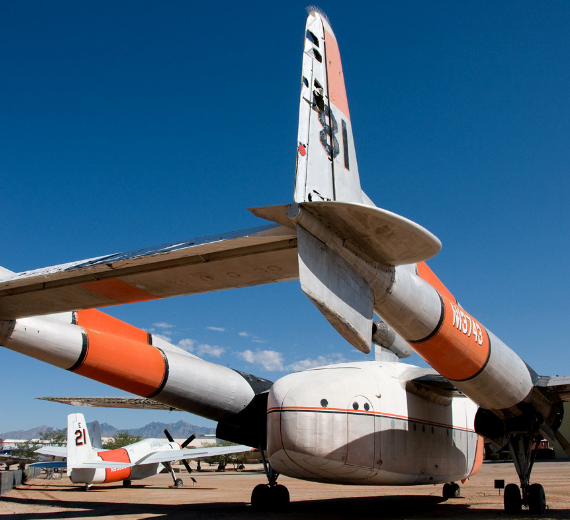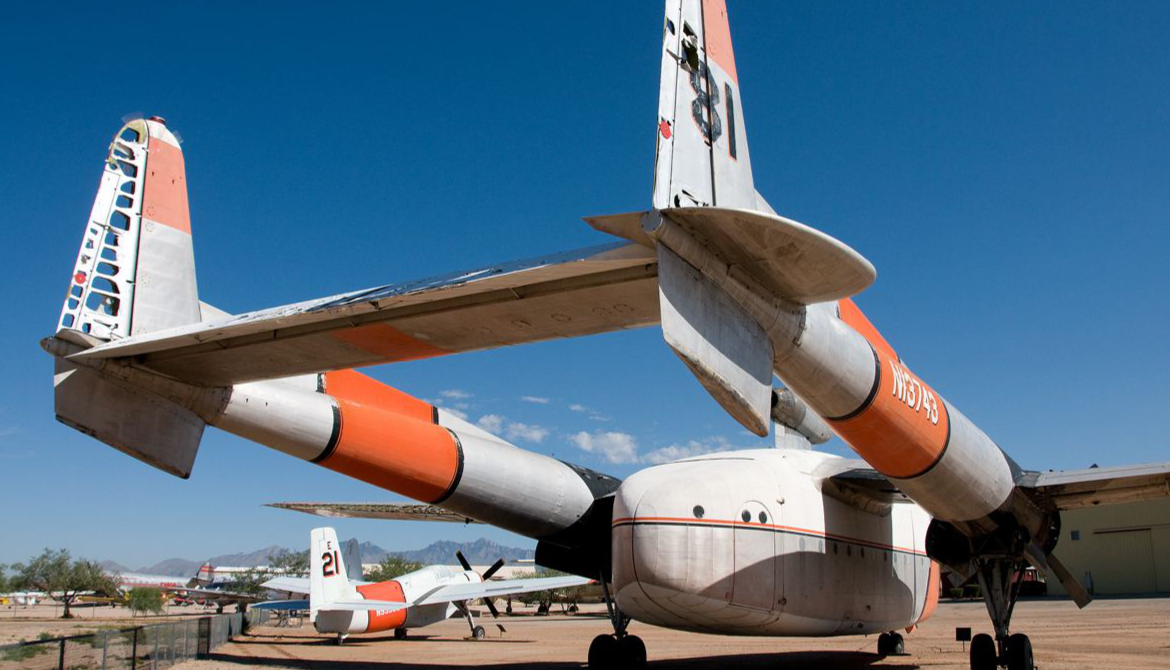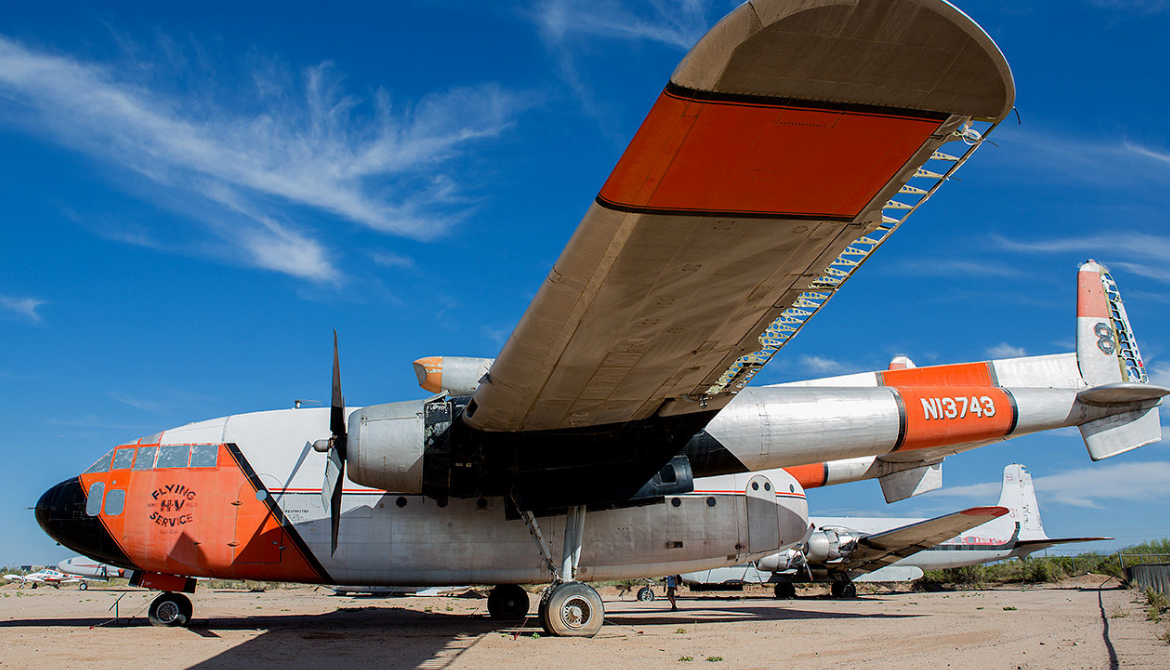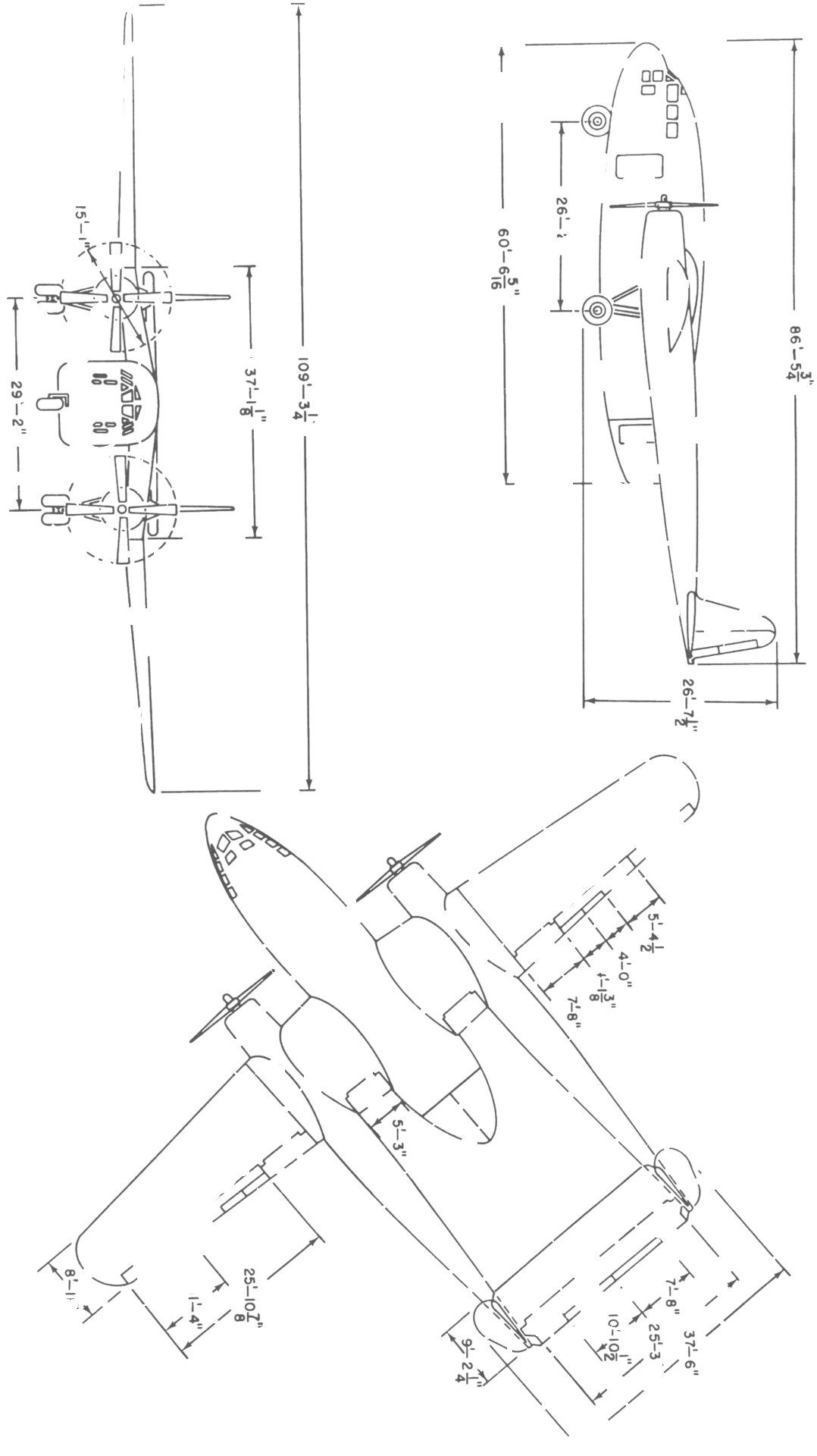Fairchild Aviation
C-119 Flying Boxcar
Role Military transport aircraft
National origin United States
Manufacturer Fairchild Aircraft
First flight 17 November 1947
Introduction December 1949
Retired 1995 Republic of China Air Force
Primary users United States Air Force
United States Navy
United States Marine Corps
Republic of China Air ForceProduced 1949–1955
Number built 1,183
Developed from Fairchild C-82 Packet
Variants Fairchild AC-119
Developed into Fairchild XC-120 Packplane
.
History Fairchild Aviation Corporation
Fairchild C-119 Flying Boxcar
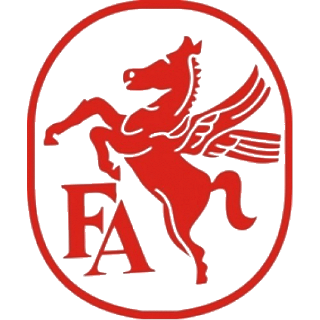
The Fairchild C-119 Flying Boxcar (Navy and Marine Corps designation R4Q) was an American military transport aircraft developed from the World War II-era Fairchild C-82 Packet, designed to carry cargo, personnel, litter patients, and mechanized equipment, and to drop cargo and troops by parachute. The first C-119 made its initial flight in November 1947, and by the time production ceased in 1955, more than 1,100 had been built.
The Air Force C-119 and Navy R4Q was initially a redesign of the earlier C-82 Packet, built between 1945 and 1948. The Packet had provided limited service to the Air Force's Tactical Air Command and Military Air Transport Service before its design was found to have several serious problems. Though it continued in service till replaced, all of these were addressed in the C-119, which had its first test flight already in 1947.
Operational history

403rd TCW C-119s drop the 187th RCT over Korea, 1952 
C-119 in flight The aircraft saw extensive action during the Korean War as a troop and equipment transport. In July 1950, four C-119s were sent to FEAF for service tests. Two months later, the C-119 deployed with the 314th Troop Carrier Group and served in Korea throughout the war.
In December 1950, after People's Republic of China Expeditionary People's Volunteer Army troops blew up a bridge at a narrow point on the evacuation route between Koto-ri and Hungnam, blocking the withdrawal of U.N. forces, eight U.S. Air Force C-119 Flying Boxcars flown by the 314th Troop Carrier Group were used to drop portable bridge sections by parachute. The bridge, consisting of eight separate sixteen-foot long, 2,900-pound sections, was dropped one section at a time, using two parachutes on each section. Four of these sections, together with additional wooden extensions were successfully reassembled into a replacement bridge by Marine Corps combat engineers and the US Army 58th Engineer Treadway Bridge Company, enabling U.N. forces to reach Hungnam.
0
KmCeiling
0
KmCombat RANGE
0
Km/hAircraft Speed
0
Max Crew
Photo Gallery
Fairchild Aviation Corporation
Fairchild C-119 Flying Boxcar


Fairchild Aviation Corporation
Fairchild C-119 Flying Boxcar
General Info
-
-
- Crew: 5 (pilot, co-pilot, navigator, radio operator and crew chief)
- Capacity: 67 troops or 35 stretchers or 27,500 lb (12,500 kg) cargo
- Length: 86 ft 6 in (26.37 m)
- Wingspan: 109 ft 3 in (33.30 m)
- Height: 26 ft 6 in (8.08 m)
- Wing area: 1,447 sq ft (134.4 m2)
-
Powerplant
-
-
- Empty weight: 39,800 lb (18,053 kg)
- Gross weight: 64,000 lb (29,030 kg)
- Max takeoff weight: (33,566 kg)
- Fuel capacity: 11,000 L
- Powerplant: 2 × Pratt & Whitney R-4360-20W 28-cylinder air-cooled radial engines, 3,500 hp (2,600 kW) each
- Propellers: 4-bladed Hamilton-Standard Hydromatic, 15 ft 0 in (4.57 m) diameter
-
Performance
- Maximum speed: 281 mph (452 km/h, 244 kn) at 18,000 ft (5,500 m)
- Cruise speed: 200 mph (320 km/h, 170 kn) (70% normal rated power)
- Stall speed: (164 km/h, 89 kn)
- Range: 1,770 mi (2,850 km, 1,540 nmi) with 5,500 lb (2,500 kg) cargo
- Service ceiling: 23,900 ft (7,300 m)
- Rate of climb: 1,010 ft/min (5.1 m/s)
- Take-off run to 50 ft (15 m): 2,300 ft (700 m)
- Landing run from 50 ft (15 m): 1,890 ft (580 m)
Armament
-
- None
.
Links to Youtube & Others
The Bf 108A first flew in 1934, followed by the Bf 108B in 1935. The Bf 108B used the substantially larger, 12.67 litre displacement Argus As 10 air-cooled inverted V8 engine. The nickname Taifun (German for "typhoon") was given to her own aircraft by Elly Beinhorn, a well-known German pilot, and was generally adopted
Fairchild
C-119 Flying Boxcar
Development of the type continue and in 1935 the Bf 108B appeared with the fin and rudder having undergone modifications.
Youtube Link
Conceived as a competitive aircraft the Bf 108 would take part in the 1936 Berlin Olympics.

